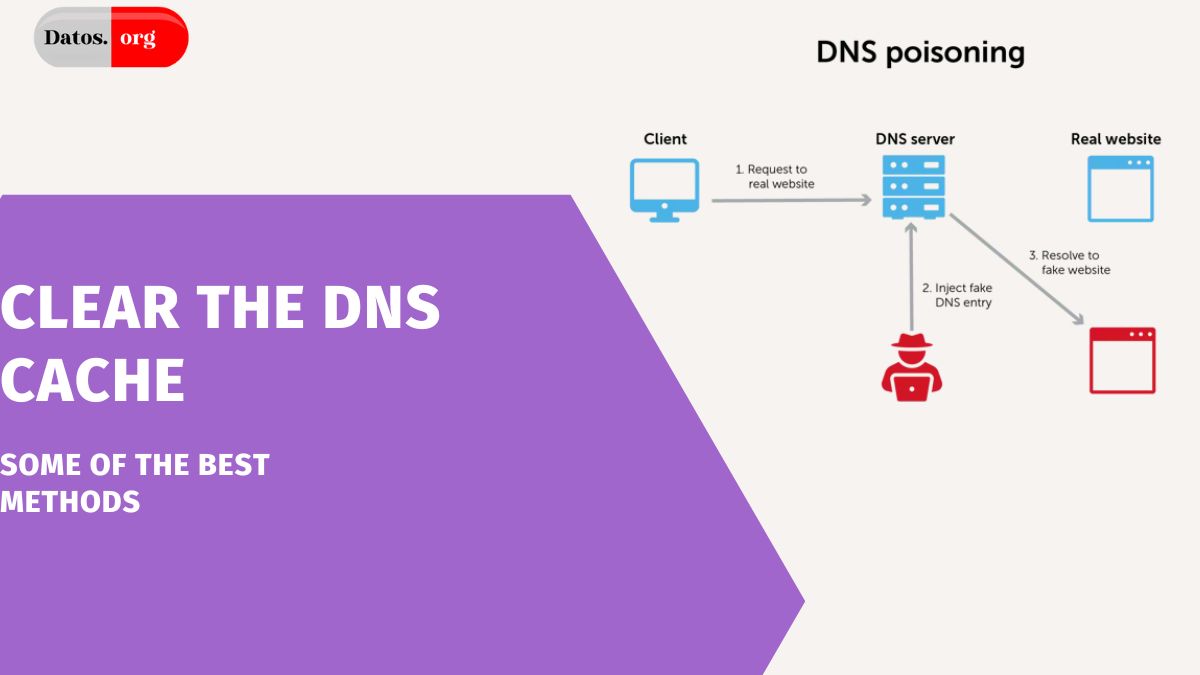The Domain Name System (DNS) is like the internet’s phone book, translating human-friendly website names like “www.google.com” into numerical IP addresses that computers use to locate and connect to each other. Sometimes, however, the DNS cache, a temporary storage of recent DNS lookups can cause problems.
If the cache gets old or corrupted, you might face issues like trouble loading websites or accessing updated web content.
Also, if you are using Google Chrome, there is a simple method to clear the DNS cache using a unique built-in tool. In this article, we will help you through the steps to clear the DNS cache using chrome://net-internals/#dns.

Before we start the step-by-step guide, let us discuss DNS and why you might need to clear its cache.
- What is DNS?
- What is DNS cache?
- Why clear the DNS cache?
- How to clear the DNS cache using chrome://net-internals/#dns
- Other methods to clear the DNS cache
- Clearing the DNS cache using the command prompt (Windows)
- Clearing the DNS cache on macOS
- Benefits of clearing the DNS cache
- When should you clear the DNS cache?
- Conclusion
- People May Ask
- What is the DNS cache?
- How do I clear the DNS cache using Chrome?
- Can I clear the DNS cache on other devices?
- How often should I clear my DNS cache?
What is DNS?
As said earlier, DNS stands for Domain Name System. It is an important part of how the internet works, which serves as a directory service that helps your computer find the correct IP address for the website you are trying to visit.
When you type a website address into your browser, the DNS server looks up the domain name and finds the corresponding IP address, which allows your computer to connect to the right web server.
What is DNS cache?
To speed up the process of accessing websites, your computer stores the results of these DNS lookups in a temporary database called the DNS cache.
This means that if you visit a website more than once, your computer can quickly recover the IP address from the cache instead of asking the DNS server again. This usually speeds things up, but sometimes it can lead to issues.
Why clear the DNS cache?
There are many reasons why you might want to clear the DNS cache:
- Website loading issues: If a website has just changed its IP address, your computer might still be trying to use the old one stored in the DNS cache, which cause the site to fail to load properly.
- Accessing updated content: Sometimes, changes to a website’s structure or content might not be reflected because your browser is still relying on outdated DNS information.
- Security: In some cases, the DNS cache can be compromised by malicious actors. Clearing it can help remove any unwanted entries.
- General troubleshooting: If you are facing internet issues, clearing the DNS cache is a common first step in troubleshooting.
Now that we understand why clearing the DNS cache can be important, let us look at how to do it using Google Chrome.
How to clear the DNS cache using chrome://net-internals/#dns
Google Chrome includes a hidden tool called chrome://net-internals/ that gives access to some network-related settings and diagnostics. One of its features allows you to clear the DNS cache directly from your browser. Here is how to do it:
- First, make sure Google Chrome is running on your computer. If you do not have Chrome installed, you will need to download and install it from the official Google website.
- In the address bar at the top of Chrome, type chrome://net-internals/#dns and press Enter. This will take you to a specialized settings page within Chrome that deals with network internals.
- Once you are on the net-internals page, you will see a menu on the left-hand side with some options. The page should automatically open on the DNS section, but if it does not, click on the “DNS” tab to access the DNS settings.
- On the DNS page, you will see a button labelled “Clear host cache.” This is what you need to click to clear Chrome’s DNS cache. Simply click the button, and the DNS cache will be instantly cleared.
- You will not see a big confirmation message, but the action is completed as soon as you click the button. If you want to be extra sure, you can refresh the page or check your browsing experience to see if any issues have been resolved.
- While clearing the DNS cache alone should be enough to resolve most issues, restarting Chrome can sometimes help to ensure all settings are properly refreshed. Just close all Chrome windows and then reopen the browser.
Other methods to clear the DNS cache
While clearing the DNS cache using chrome://net-internals/#dns is a quick and easy method, there are other ways to achieve the same result. Here are some of the alternatives:
Clearing the DNS cache using the command prompt (Windows)
If you are using a Windows computer, you can also clear the system-wide DNS cache using the Command Prompt:
- Press Windows + R to open the Run dialog, then type cmd and press Enter to open the Command Prompt.
- In the Command Prompt window, type ipconfig /flushdns and press Enter. You should see a message saying that the DNS Resolver Cache was successfully flushed.
This method clears the DNS cache for your system, not just for Chrome.
Clearing the DNS cache on macOS
For Mac users, the process is different but still simple:
- You can find Terminal in your Applications folder under Utilities, or just search for it using Spotlight (Cmd + Space).
- Type the following command into Terminal and press Enter: sudo killall -HUP mDNSResponder.
- You will need to enter your system password to confirm the action.
This command clears the DNS cache on macOS.
Benefits of clearing the DNS cache
Clearing the DNS cache can have some positive effects on your browsing experience. Let us explore some of these benefits in more detail:
- If your DNS cache contains old or incorrect entries, your browser might take longer to find the correct IP address for the website you are trying to visit.
- By clearing the cache, you ensure that your computer gets the most up-to-date DNS information, which can lead to faster browsing speeds.
- As I have told earlier, outdated DNS cache entries can cause websites to load incorrectly or not at all. Clearing the cache removes these outdated entries, which allows your browser to catch the correct information and load the site properly.
- While rare, DNS cache poisoning can occur if malicious entries are added to your DNS cache. Clearing the cache helps remove any harmful entries, which adds an extra layer of security to your browsing experience.
- Websites are constantly being updated, and if your DNS cache is holding onto old information, you might not see the latest version of a site. Clearing the cache ensures that you are accessing the most current content available.
- If you are experiencing strange or inconsistent internet issues, clearing the DNS cache is a simple first step in troubleshooting. It can resolve a number of common problems, making it easier to identify and fix more complex issues.
When should you clear the DNS cache?
Clearing the DNS cache is not something you need to do all the time, but there are certain situations where it can be helpful:
- If you have recently changed your DNS settings, clearing the cache ensures that your computer uses the new settings instantly.
- If you are having trouble accessing a specific website, mainly if you know it is online, clearing the DNS cache might fix the problem.
- If your computer has recently experienced security updates, clearing the DNS cache can help ensure that any caches are removed.
- If you have connected to a new Wi-Fi network or moved to a different location, which cleans the DNS cache can help your computer adapt to the new environment more smoothly.
Conclusion
Clearing the DNS cache using chrome://net-internals/#dns is a fast and effective way to resolve browsing issues, speed up your internet, and ensure you are accessing the most current content online. Whether you are troubleshooting a problem or just want to keep your browser running smoothly, this simple process can make a big difference.
People May Ask
What is the DNS cache?
The DNS cache is a temporary database that stores current DNS lookups, helping your computer quickly find websites without needing to ask the DNS server each time.
How do I clear the DNS cache using Chrome?
To clear the DNS cache in Chrome, type chrome://net-internals/#dns into the address bar, then click on the “Clear host cache” button.
Can I clear the DNS cache on other devices?
Yes, you can clear the DNS cache on Windows using Command Prompt and on macOS using Terminal.
How often should I clear my DNS cache?
There is no need to clear the DNS cache regularly, but it is a good idea to do so when experiencing website issues, after changing DNS settings, or after security updates.

I am a passionate technology and business enthusiast, constantly exploring the intersection where innovation meets entrepreneurship. With a keen eye for emerging trends and a deep understanding of market dynamics, I provide insightful analysis and commentary on the latest advancements shaping the tech industry.